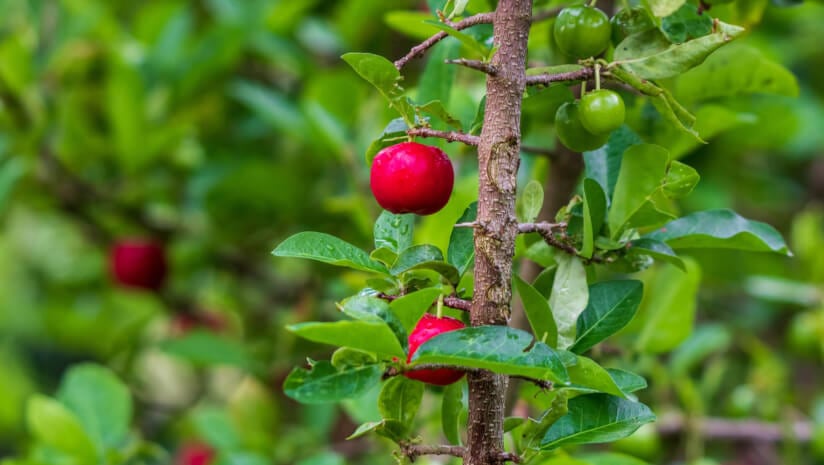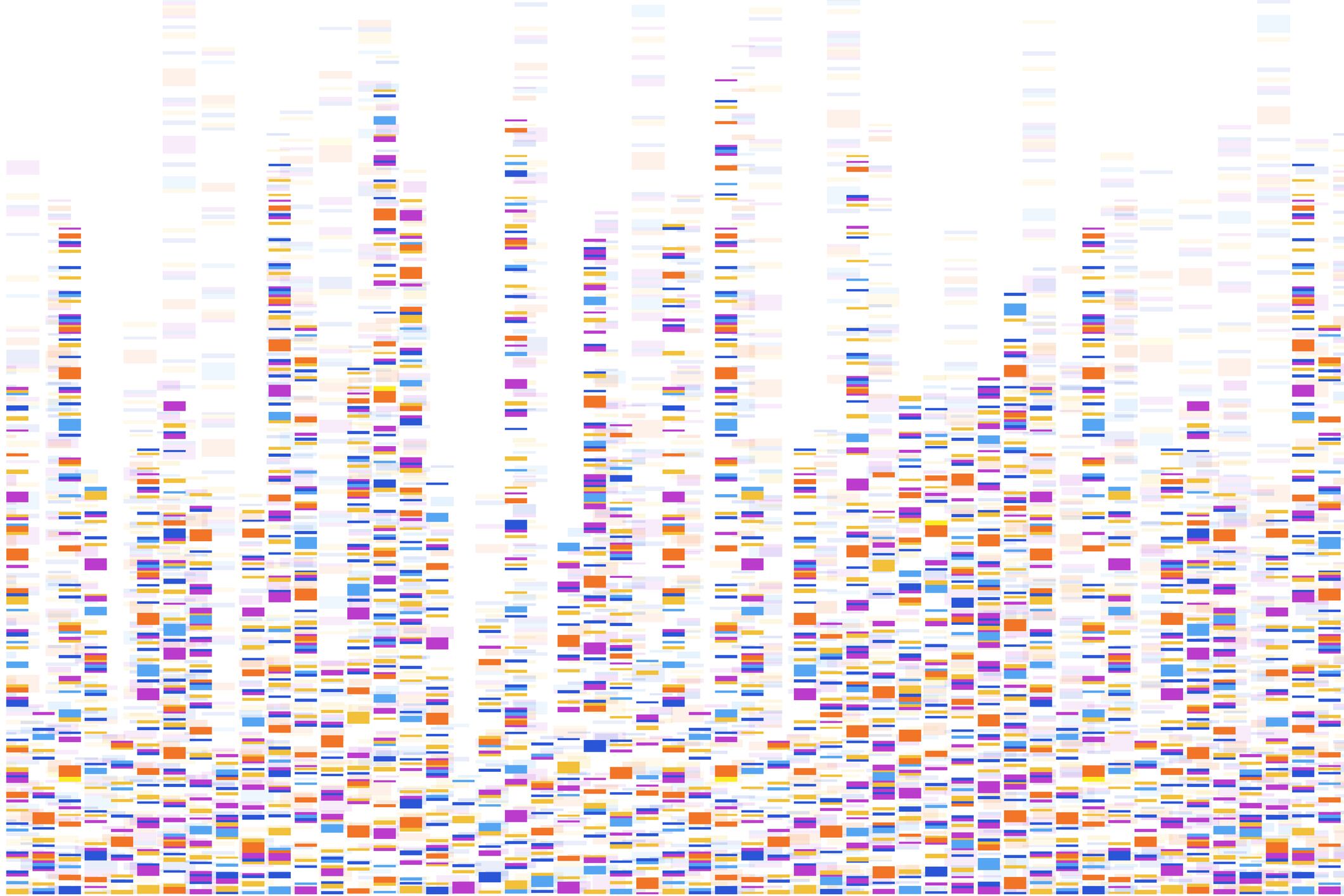“Unfortunately, conventional morphological examination does not distinguish acerola fruit species,” they wrote in the journal Scientific Reports. “Furthermore, no published methods are available to distinguish the fruits of these species including chemical and DNA based techniques.”
The research was supported by the Natural Health Product Research Alliance (NHPRA), a collaborative at the University of Guelph led by Dr. Steven Newmaster that is focused on advancing quality control in the natural health product industry.
Adulteration in the acerola supply chain
Naturally high in vitamin C (containing up to 100 times more than oranges and lemons), phenolic compounds and carotenoid pigments, acerola (Malpighia emarginata or Malpighia glabra) has achieved superfood status and become a highly traded fruit.
It is widely used in natural health products for its immune boosting and antioxidant properties across a range of categories including energy and vitality, metabolic health, beauty from within, memory and mood, cellular protection and joint health.
The University of Guelph researchers noted that there are differences among the fruit of Malpighia species with respect to phytochemicals, nutrient value and clinical research, as well as evidence of adulteration with other fruit such as cherries (Prunus spp.).
They highlighted that the risk to quality assurance increases when berries are processed into juice or powdered ingredients and that a lack of quality assurance methods also increases the risk of adulteration with less expensive fruit from other species. The fruit’s vitamin C content is also dependent on season, climate growing site and ripening stage, with vitamin content decreasing as the fruit ripens.
Commenting independently on the paper, Dr. Stefan Gafner, director of the Botanical Adulterants Prevention Program (BAPP), said the main adulteration concern with acerola extracts appears to be the undeclared addition of extraneous vitamin C to meet label claims.
“I was not aware that cherry is used as an adulterant for acerola, and I have not seen any evidence for this in the literature, but I wouldn’t be surprised if such adulteration occurs,” Dr. Gafner noted.
He referenced a 2023 study published in the journal Molecules which used a similar Nuclear Magnetic Resonance (NMR) analytical technique to the novel methods proposed to calculate the vitamin C to choline ratio and determine whether the vitamin C originated from acerola or an adulterant.
“Analyzing the metabolomic profile of concentrated acerola juice enabled us to identify the [vitamin C]/choline ratio as an authenticity marker of acerola extracts,” this previous study reported. “In fact, the observation of the 1H-NMR-based metabolomic profile (detection of some signals of amino acids, organic acids and trigonelline) and of the ratio between the amounts of [vitamin C] and choline enabled us to identify the presence of exogenous ascorbic acid and detect such fraudulent manipulations.”
Novel methods for acerola
The University of Guelph researchers explored the benefits and constraints of two orthogonal molecular methods, defined as analytical techniques that capture information about the same sample attribute using different measurement principles.
“The objective of this study is to develop of Nuclear Magnetic Resonance fingerprints and DNA sequence methods to distinguish acerola species (Malpighia glabra, M. emarginata) for quality assurance of food, dietary supplements and natural health products,” they wrote.
“More specifically, we used two methods including, (1) DNA sequencing the ITS nuclear region for 16 samples and, (2) 1 H-NMR metabolite fingerprinting to analyze 16 samples consisting of 10 samples of two acerola species (Malpighia glabra, M. emarginata) and six samples of common adulterant cherry (Prunus spp.) species.”
These are presented as alternatives to conventional analytical chemistry methods like morphology, microscopy, DNA-based and phytochemical analysis that may generate inconclusive reports. Dr. Newmaster previously faced scrutiny over the use of DNA barcoding in a high-profile study that claimed that many herbal supplements tested contained fillers or contaminants rather than the plants listed on label.
“It’s great to see new validated methods developed, and from our experience, orthogonal methods, such as the combination of NMR and genetic testing, are more suitable to detect adulteration than using one single method,” Dr. Gafner said. “The use of NMR in a quality control laboratory has great potential, and I have seen a number of useful applications of NMR. The same is true with genetic testing methods.”
He noted, however, that the proposed method combination of genetic assay (ITS sequence) and NMR metabolomics cannot detect the undeclared addition of extraneous vitamin C. Moreover, since the equipment required for either genetic or NMR testing is not commonly available in the industry, he doubts this approach will see widespread use in quality control laboratories.
Sidney Sudberg, president and chief science officer of Alkemist Labs, an independent lab specializing in botanical and fungi screening, said that while there is no question about the effectiveness and power of NMR and DNA methods of analysis—especially when trying to find a needle in a haystack, these approaches may not be the best or necessary fit-for-purpose application for the identification or adulteration of food and botanical dietary supplements.
“My question is, why would one use a sledgehammer to hammer a nail, when an ordinary hammer will do the job just as well or possibly better?” he said. “There are adequate analytical techniques that can identify botanicals just as well as NMR or DNA, e.g., HPTLC and microscopy, without the need for expensive equipment that requires powerful software and an advanced skillset to use effectively.”
Dr. Gafner suggested incorporating the anthocyanin profile as part of the authentication process (by HPTLC or HPLC-UV/Vis) to then quantify the vitamin C relative to other metabolites as a screening method for adulteration. He added that a more reliable method to detect non-acerola-derived vitamin C is by determining the ratios of the stable carbon isotopes ¹³C and ¹²C. Synthetic or industrial vitamin C, often made from C4 plants, has a different carbon isotope signature than natural acerola-based vitamin.
Dr. Gafner also questioned the proposed use of malic acid and ferulic acid as marker constituents to distinguish acerola from cherry.
“Malic acid is inexpensive and can be easily added to a cherry extract,” he said. “Similarly, ferulic acid is a very common plant metabolite and can be found in many potential adulterating ingredients.”
Source: Scientific Reports. doi: 10.1038/s41598-025-12408-6. “Development of molecular diagnostic methods to distinguish acerola species for quality assurance of food, dietary supplements and natural health products”. Authors: Subramanyam Ragupathy et al.



